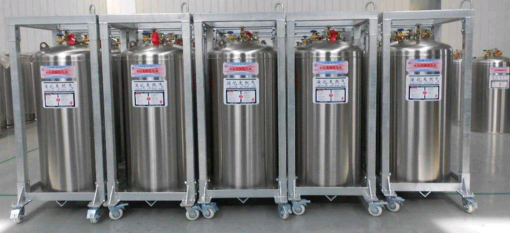15、 Whether the cylinder newly put into use, regularly inspected, replaced the cylinder valve, or filled for the first time after exhausting the gas for some reason, has been replaced or vacuum treated.

If the above cylinders are found not to be replaced or vacuum treated during inspection, except for compressed air cylinders, they shall be marked and transferred to relevant processes, and the air in the cylinders shall be replaced or emptied according to relevant regulations.
16、 Shake or roll the cylinder by hand, and judge whether there is excessive water or heavy objects hitting the inner wall of the permanent gas cylinder by hand feeling.
Excessive accumulated water in the bottle will not only affect the gas filling volume and purity, but also lead to accelerated corrosion of the inner wall or other accidents. Each station shall establish and implement the system of regularly discharging the accumulated water in the bottle according to the actual situation.
For flammable and combustion supporting gas cylinders, special attention shall be paid to determine whether there are heavy objects in the cylinder hitting the inner wall. There are many filling stations for bottled gas and regular inspection stations for gas cylinders. Metal or non-metallic sundries such as fried dough twist drill sections, discus, screws, spiral iron filings, broken grinding wheel blocks, iron bars, etc. are found in the cylinders.
If excessive water or heavy objects are found in the bottle during inspection, the third item above shall be followed.
17、 For liquefied gas cylinders with residual liquid, it shall be measured whether the residual liquid accumulation in the measuring cylinder exceeds the requirements.
For liquefied gas cylinders with residual liquid, the residual liquid accumulation in the cylinders shall be weighed one by one to see if it exceeds the requirements. If the residual liquid accumulation is found to exceed 4-6% of the filling weight of the cylinder, it shall be marked and transferred to the relevant process for emptying.
18、 Whether the cylinder body has cracks, serious corrosion, obvious deformation, mechanical damage and other defects that can affect the strength and safety of the cylinder.
The inspection shall be conducted according to the appearance inspection clauses in the regular inspection and evaluation standards for steel seamless gas cylinders, steel welded gas cylinders, dissolved acetylene gas cylinders, liquefied petroleum gas steel cylinders, and aluminum alloy seamless gas cylinders according to the categories of gas cylinders.
Cylinders found in the inspection that the external defects of the cylinder body do not meet the requirements of the above standards, or those whose defects are difficult to assess, shall be handled according to the third requirement above. If there is gas or residual liquid in the defective cylinder, it shall be handled in advance according to the regulations.
19、 Check whether there are hidden defects in the gas cylinder through sound.
When the cylinder is free of appendages and other obstacles to the vibration of the cylinder, gently knock the cylinder wall with a hammer. If the sound is clear and powerful, the aftertaste is light and long, and there is a sense of melody, the cylinder is qualified. If the sound emitted is muddy, with heavy and short aftertaste, and is accompanied by a similar wooden fish sound, it shall be marked and handled according to the third requirement above.